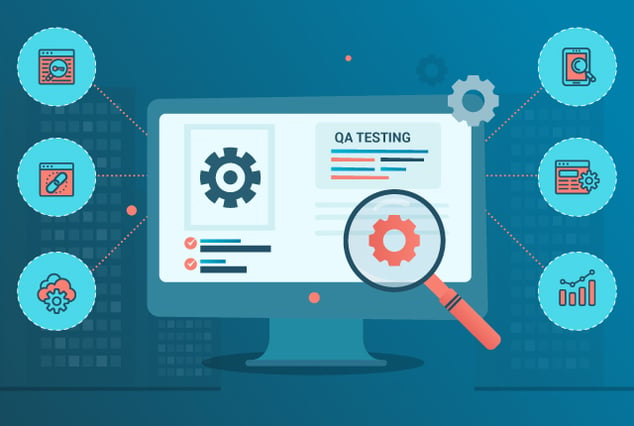
ETL automation is rapidly becoming an essential part of any modern business's toolkit. This process enables businesses to extract, transform, and load data from multiple sources into a single system, allowing for faster and more efficient data analysis. This kind of automation also helps businesses save time and money by eliminating manual processes such as data entry and data cleansing. Additionally, it can help businesses improve their data accuracy and reduce errors, resulting in more reliable insights. On top of that, ETL automation can help businesses reduce the risk of data breaches and comply with data security regulations.
All these benefits make ETL automation a must-have for any business that wants to stay competitive in today's market. By automating their data processing, businesses can optimize their operations, improve their data analysis, and save time and money. With the right ETL automation solution, businesses can stay ahead of the curve and maximize their return on investment.
Read on to learn more about the benefits of ETL automation and why businesses need to do it.
What Is ETL Testing?
ETL stands for Extract, Transform, and Load, and it’s an essential process for businesses to collect, cleanse, and organize data from different sources. The process involves three main steps:
- Extracting: Collecting data from various sources such as databases, flat files, and web services
- Transforming: Cleaning and transforming the data into a standard format that is suitable for analysis
- Loading: Loading the data into a target database or data warehouse
What To Test in an ETL Process and Why Is It So Difficult?
The surge of data has made it difficult for businesses to keep up with the volume, variety, and velocity of data. Because of the complexity of ETL processes, several different things need to be tested. These include the following:
-
Data Profiling
This ensures the structure, quality and content of source data. Users better analyze data for uniqueness, incompleteness, Corrupted, duplicated. This helps to identify patterns and generate insights at different level examples: Column, Cross-Column, Cross table.
-
Data Quality
Ensure that the data is new, correct, and free of errors. Data from different sources must be standardized in a suitable format without anomalies or duplicates.
-
Data Transformation
Involves using different transformations such as sorting, lookup, grouping, aggregation, and creating new columns. Testing ensures that the data has been adequately converted from one form to another without errors or missing values.
-
Data Mapping
It involves mapping source data fields to target fields to ensure you extract and load the correct data into the target system. Testing helps keep data free of defects and corruption during the migration process.
-
Business Rules
They are the set of instructions that govern how data is handled. Even if the transformed data is accurate, there’s still a risk of conflicts and violations of the business logic. Testing helps ensure that the ETL process follows the correct logic and produces reliable results.
-
Referential Integrity
Plenty of tables in the data warehouse include foreign keys that link to other tables. Referential integrity defines a relationship between two data sources, such as between two tables. It’s essential to ensure that the data in one source is consistent with the data in another.
-
Standards and Conventions
Every data warehouse implements unique standards and conventions. Testing helps ensure that the ETL process and all developers comply with the industry or organizational measures. This helps guarantee the data warehouse’s performance, stability, and scalability.
-
Performance/Load Testing
At times customers only provide empty schema or very less amount of test data which enables testers to validate all test scenarios.
-
Cross Database Correlation
This will help validate entire data set between cross platforms and different databases which expands the scope of testing and provides flexibility to achieve 100% accuracy.
-
Retesting/Regression
It involves fixing the bugs and defects in data in the destination system and running the reports again for data authentication. Also checks for unexpected side-effects, while Re-testing makes sure that the original fault has been corrected.
-
Database/Data warehouse Integration Testing
It involves testing all the individual areas, and later combining the results to find if there are any deviations. This covers validation of tables, columns, constraints, business rules, stored procedures, functions and finally validates the logs.
Common Challenges in ETL Testing
ETL testing is a complex process that requires high accuracy and precision. Here are some of the common challenges involved in ETL testing.
-
Unoptimized Code
Your code may have errors and inefficiencies that can cause the ETL process to fail. These errors can occur in any part of the ETL process.
-
Network Latency
It can impact your ETL process’s performance, especially when working with large datasets. Network latency can delay the processing and loading of data to the final destination.
-
Insufficient Resources
ETL automation testing requires numerous resources, such as disk space and memory. If you lack resources, your ETL process may fail or become slow.
-
Unclean Data
Inaccurate, incomplete, duplicate or out-of-date data cause errors in the ETL process. It is crucial to ensure that the data is clean and up-to-date.
-
Long-term Maintenance Requirements
As your ETL needs grow and change, you may need to add or modify tests. This can require investments in time and resources to ensure that the ETL process is stable and reliable for long-term maintenance.
-
No Test Data to Less Data
In case of no or less data all the test scenarios can not be covered which results in failure at production level which also leads to performance issue or application crash or out of memory.
A Case for Automating ETL Processes
Manually testing every ETL process can be extremely time-consuming, tedious, and prone to human errors. ETL automation helps reduce the risk of manual mistakes while ensuring that all tests are conducted efficiently and accurately. Here are some reasons why ETL automation is better compared to manual coding:
-
Helps Manage Performance and Stability of Database
There are tools built to improve the performance and stability of data warehouses, especially when working with disparate or massive datasets. While hand-coding can achieve the same results, it would require enormous effort. ETL automation is faster and more efficient, especially with more complex data.
-
Easy Management and Scaling
An automated tool shows the parts of the ETL process. This includes where the data comes from and how it is transformed. This makes the ETL process more organized, easy to manage, and easier to scale when needed. A manual process would require a lot of coding, often making it difficult to scale if needed. It would take a lot of effort to add new sources or make changes.
-
Simplification of Data
ETL automation simplifies data validation by quickly and accurately comparing two data sources, saving time and effort. It also makes identifying and discarding anomalies in the ETL process easier, thereby improving accuracy.
8 Reasons Why You Should Automate Your ETL Process
Here are six reasons why ETL automation is worth considering:
-
Helps With Automating Documentation
Documentation is an integral part of any ETL process. ETL automation helps you produce accurate and up-to-date documentation quickly and efficiently. -
Helps Automate Data Lineage
It involves tracking your data’s source, transformations, and destinations. ETL automation helps to ensure that the data lineage stays accurate as you make changes to your ETL process.
-
Can Be Used To Implement Standards
Automated ETL testing makes it easier to implement standards and best practices that you may want to adhere to, ensuring that the data quality is consistent across all parts of the ETL process.
-
Ensures Quicker Time-to-Value
ETL automation reduces the project lead time when adopting new technology or migrating from one system to another, ensuring quicker time-to-value for the ETL process.
-
Helps With Improving Data Governance
By automating ETL testing, data stewards can monitor the entire data lifecycle and enforce compliance regulations, improving data governance.
-
Helps To Create a Data Fabric
ETL automation helps to create a unified data fabric that covers the entire ETL process, ensuring complete visibility and accessibility.
-
Helps Re-testing/Regression
It helps in repetitive tasks. Also validate and regression the bugs and defects without compromising the existing functionality in very less time than manual effort.
-
Helps to Automate Test Data Generation
This helps generate test data by maintaining the integrity of data across databases. This also helps validate all test scenarios including performance and load testing.
How To Automate Your ETL Process
Here are some tips on how to automate your ETL test automation process:
-
Choose the Automation Tool for ETL Testing
Choosing the right automation tool for your ETL testing needs is crucial. You can select a ready-made program or a manual programming language.
-
Create a Model Workflow
Develop an ETL testing framework to streamline your ETL automation process. This helps you identify potential problems and improvement opportunities in the system.
-
Use Your Model To Derive Test Cases
You can use your ETL testing framework to generate cases covering your entire ETL process.
-
Create a Test Mart
Creating a test mart allows you to match data points to their respective test cases and assign records with matching criteria.
-
Run ETL Tests
You can run ETL tests to evaluate results and identify issues. Each test case can be a pass or fail, depending on your specifications.
Features To Consider While Selecting an ETL Tool
When selecting an ETL tool, consider the following features:
-
Data Comparison Engine
The ETL automation testing tool should be able to compare and validate high volumes of data across different sources.
-
Data Connectors
Make sure that the automation tool can connect multiple data sources, including databases, flat files, and APIs.
-
CI/CD Integration
The ETL automation tool should be able to integrate with your CI/CD tools, allowing organizations to embed testing into their pipelines.
-
Graphical User Interface
To ensure users can easily interact with the system, make sure the ETL automation testing tool has a seamless, user-friendly graphical interface.
-
Workflow Integration
Confirm that the ETL automation tool will be able to integrate testing with existing workflows, allowing users to streamline their processes.
How To Find the Right Partner for Your ETL Testing Requirements?
When selecting an ETL automation testing partner, it is vital to look for a company with expertise in the field.
Here are some tips on how to find the right partner:
-
Find a Partner Who Specializes in ETL Testing
An ETL testing and automation specialist has the experience and expertise to help with your ETL testing requirements. They will be able to provide you with the best automation beginning With the basic ETL capabilities. You can start with the basic ETL capabilities and ensure that the partner can deliver results. This will help you create a strong foundation for further and more complex automation projects.
-
Work With Your Partner Like a Team
Work With Your Partner Like a Team - collaborate and solve problems together. This will help you create better solutions for your ETL automation testing project.
-
Gather Relevant Feedback From End-users
Collect feedback from the end-users to understand their expectations and how well the ETL automation process works. This will help you make improvements in your ETL testing project.
How QASource Can Help With Your ETL Testing Capabilities
ETL testing and automation are essential for ensuring data accuracy, integrity, and security. Automated ETL processes enable organizations to efficiently and quickly validate their data and identify any potential issues in the system.
The right ETL automation partner will help you streamline your ETL testing process, improve the quality of your data, and enhance performance. At QASource, we have experienced ETL automation specialists who are well-versed in all aspects of ETL testing. We provide a comprehensive suite of services that cover your entire ETL process.
Contact us today to learn more about how we can help you with your ETL testing and automation needs.



